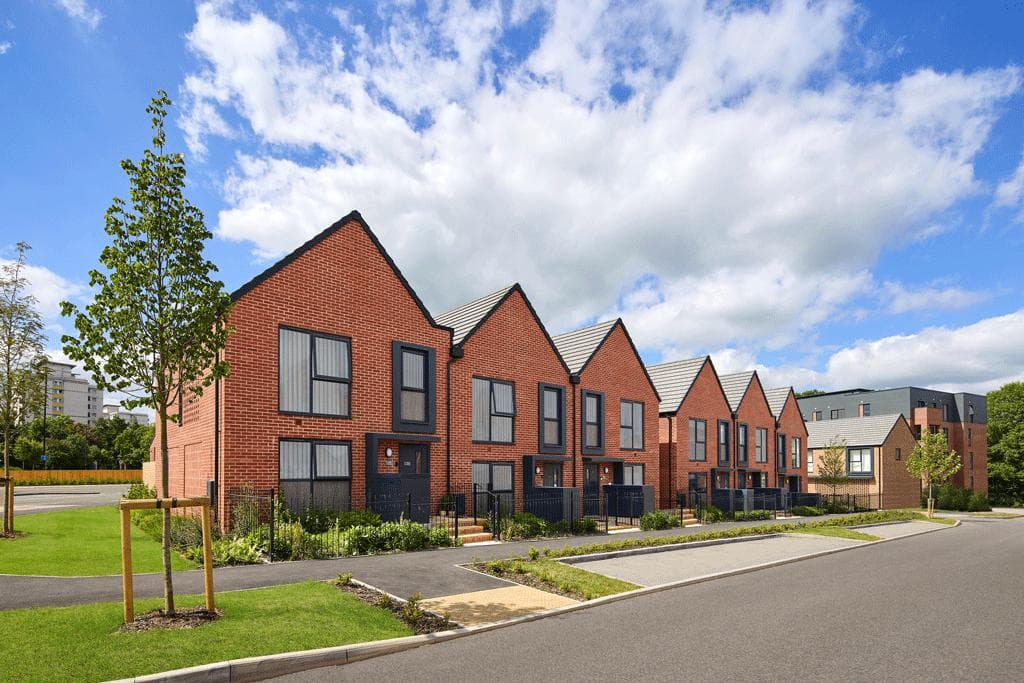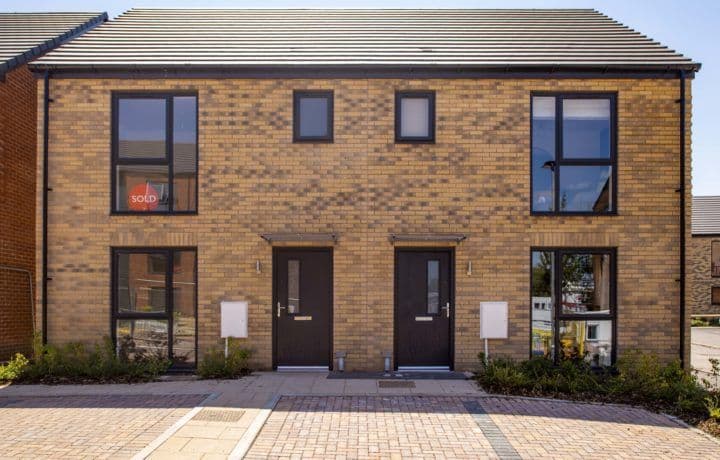Future Homes Standard 2025: what it means for developers, planners, residents and the UK's heating future

The Future Homes Standards, a policy to end the installation of gas boilers in  Housing DevelopmentsHousing Developmentsnew-build homes has been under discussion for nearly two decades.
Housing DevelopmentsHousing Developmentsnew-build homes has been under discussion for nearly two decades.
In the UK, our homes are the biggest emitters of greenhouse gases, and the majority of properties still rely on burning fossil fuels for heating and hot water, under these new regulations, this would change.

What is the Future Homes Standard?
The Future Homes Standard (FHS) is a set of new build home heating regulations that will apply to new homes in England. The regulations will require most new homes to be built with:
- Clean heating systems (no fossil fuel boilers)
- High energy efficiency in building fabric
- Solar PV
New homes will need to be built to the highest efficiency standards, aiming to cut carbon by 75-85% compared to 2013 levels.
The FHS is part of the government's plan to reduce carbon emissions from new homes and help meet Net Zero by 2050.
How is it delivered?
The Future Homes Standard will be delivered through updates to:
- Part L of the Building Regulations (energy efficiency)
- Part F (ventilation)
These updates will ensure homes are airtight, well-insulated, and properly ventilated, while also enabling the shift to clean electric heating, like heat pumps.
Why do we need the Future Homes Standard?
Each month, without new legislation to ban the installation of gas boilers in new build properties, an estimated 11,000 homes are locked into outdated heating systems that will need replacing. This retrofit costs £110 million in avoidable expenses each month!
The Future Homes Standard is needed not only to cut carbon emissions. It's also about reducing our reliance on volatile international gas markets and creating the foundations for a thriving home-grown clean heat sector that can drive down bills and boost green jobs.

When will the Future Homes Standard come into effect?
From what we know, The Future Homes Standard is expected to be published in Autumn 2025.
It is expected that legislation will be laid by December 2026, followed by a transition period ending in all new homes having to meet the FHS by December 2027.
From 2028, it's thought that every new housing development will need to have created a low-carbon heating plan from the start of their build.
Expected FHS timeline
- Autumn 2025: Final FHS regulations expected to be published
- December 2026: Regulations become law
- December 2026: Homes without planning/building permits requested by now will need to be built to FHS
- December 2027: Transition period ends — all new homes must comply
- From 2028: All new housing developments must include a low-carbon heating plan from the outset

What does the Future Homes Standard mean for the UK?
Heating is currently the most significant source of domestic emissions in the UK. UK buildings are responsible for 30% of UK emissions. The FHS - new build home heating regulations will:
- Reduce energy bills
- Reduce our reliance on imported fossil fuels
- Cut emissions
It will triple the size of the heat pump market virtually overnight, from 100,000 to 300,000 a year. Confidence in this market growth will unlock investment in heat pump manufacturing and installation supply chains required for the wider decarbonisation of UK homes. Kensa's future investment in manufacturing capacity hinges on implementing the FHS.
These economies of scale will drive down installation costs for both new builds and existing homes. Kensa aims to lower heat pump and installation costs and is preparing to increase output significantly over the next five years.
Scaling up the heat pump market will create tens of thousands of skilled green British jobs, particularly in manufacturing, engineering, and its supply chain.
How to meet the Future Homes Standard
To meet the Future Homes Standard, we expect that you will need to build zero-carbon-ready homes. This means they must be fitted with a low-carbon heating system and be highly energy efficient. In some instances, this will also mean installing solar PV.

Get ready for Future Home Standards with Kensa
Kensa has a Future Homes Standard ready solution already being rolled out to thousands of new build properties across the country.
Kensa and GTC's ground source solution provides an end-to-end solution for housebuilders, offering the lowest cost for developers, the lowest cost for house buyers, and the lowest grid impact. This means:
- The ground source heat pump system is installed alongside other utilities during the development's build phase.
- The networked heat pump system delivers renewable heating without requiring extra grid capacity, made possible by the technology's high energy efficiency.
- It costs no more to install than an air source but offers lower carbon emissions and running costs, creating benefits for housebuilders and homeowners.
- Borehole and pipe networks have an expected design life of 100+ years, future-proofing the home for generations.
- A passive cooling option is available, which uses low ground temperatures to cool rooms.
What the Future Home Standard means for you
We look at what we think the Future Homes Standard will mean for different stakeholders.
Developers
Developers will have to meet the requirements of the Future Homes Standards. This will likely mean that they will need to specify a low-carbon heating system early in the design process.
Many developers are already switching to low-carbon heating solutions to future-proof their developments and appeal to buyers. Our solution with GTC offers house builders a Future Homes Standard compliant option.
Local Authority Planners
Planning policies must be adapted and evolved to reflect what is mandated in the Future Homes Standard to ensure that developments that incorporate low-carbon measures are prioritised.
Local authorities can use planning frameworks to look at site-wide decarbonisation and encourage the incorporation of favourable systems, such as Kensa's Networked Ground Source heat pumps.
Highways and Infrastructure Teams
Highways and infrastructure teams must update their processes to incorporate different technologies. The installation of infrastructure needed for clean heat options like networked heat pumps will need to be coordinated with the installation of other utilities such as water, electricity, and broadband.
Coordinating the installation of heating infrastructure with highway planning will prevent any extra disruption and expense.
How does the Future Homes Standard impact existing homes?
The FHS doesn't impact existing homes; it only applies to newly built properties. This means that homeowners are not required to change their heating systems under this regulation.
Individual homeowners can upgrade their own heating systems and benefit from existing government grants like the Boiler Upgrade Scheme.
Heat Pump Manufacturers
The introduction of the Future Homes Standard will triple the size of the heat pump market virtually overnight, from 100,000 to 300,000 a year. Confidence in this market growth will unlock investment in heat pump manufacturing and installation supply chains required for the wider decarbonisation of UK homes.
These economies of scale will drive down installation costs for both new builds and existing homes. Kensa aims to lower heat pump and installation costs and is preparing to increase output significantly over the next five years.
UK Supply Chain
Scaling up the heat pump market will create tens of thousands of skilled green British jobs, particularly in manufacturing, engineering, and its supply chain.
Wider UK Economy
Moving to electric heating, such as ground source heat pumps, will remove our reliance on volatile gas markets and instead focus on home-grown renewable energy.
It is a key policy for the long-term decarbonisation of homes in the UK and helps move us towards our 2050 Net Zero goals.
The deployment of home-grown electricity bolsters the UK market, keeps revenues at home, and removes reliance on other sources.